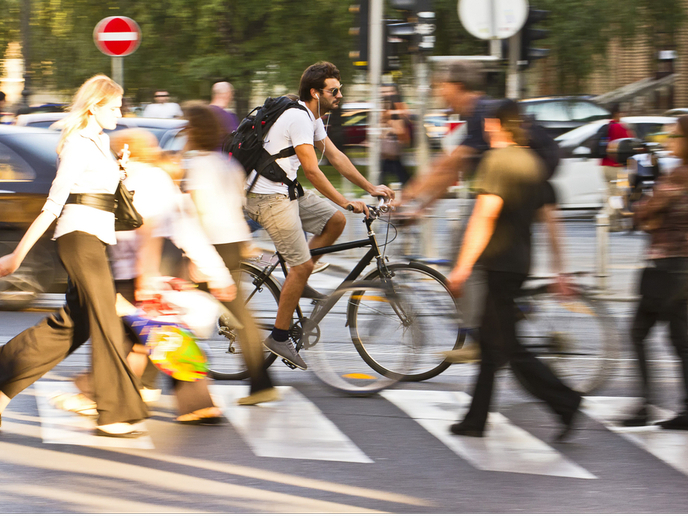Managed crowds for safer, greener and less congested cities
Congestion costs Europe EUR 100 billion each year. That’s 1 % of the EU’s GDP, for which car/road freight traffic has become – rightfully so – the scapegoat. Yet, whilst the growing number of citizens willing to ride a bike or e-bike, or even walk, provides a major source of hope – especially since the COVID-19 outbreak – we still don’t know much about pedestrian and cyclist traffic. ALLEGRO (unrAvelLing sLow modE travelinG and tRaffic: with innOvative data to a new transportation and traffic theory for pedestrians and bicycles) addresses the problem of congestion from a completely new angle. “We are facing a clear lack of data and it’s difficult to collect,” says Serge Hoogendoorn, Transportation and Planning chair at TU Delft and principal investigator of the ALLEGRO project. “Cyclist behaviour for instance has to be considered at three levels. The so-called operational level (split-second decision-making when interacting with another cyclist in the case of an overtaking manoeuvre, for example), the level of mid-term decision-making (which routes to choose), and that of long-term decision-making (which activities to partake in as a dedicated cyclist and in what order).” Right now, most policy decisions related to pedestrian and cycling infrastructure are based on a rule of thumb. But ALLEGRO’s work provides a more theoretical basis for decision makers.
From modelling to predictions
Since November 2015, Hoogendoorn and his team have been working on innovative data collection approaches. These include virtual reality (VR), field studies using GPS-equipped bicycles, controlled cycling experiments, social data for crowd characterisation, advanced data collection using Wi-Fi and 3D sensors, and extensive surveys. “The innovation resides mostly in this mixed data collection approach and its consideration of all behavioural levels. We now have highly innovative models that can be used to test novel policies and design as and when they are proposed by policymakers. With our new current-state estimation techniques, we can provide crowd managers with a better insight into the likes of where crowds occur, the impact of specific measures (against congestion for example), etc. We have also developed traffic control strategies for smart bicycles that can be used to improve urban flow and ultimately make the bicycle a more attractive transport option for citizens,” Hoogendoorn explains. Beyond its microscopic and macroscopic models, the ERC-funded ALLEGRO project also provides game-theoretical models. These provide useful information on conditions under which traffic self-organises efficiently, as opposed to those where it collapses. Several applications are already being considered. Hoogendoorn and his team are notably working together with Dutch company NS Stations – which manages over 400 railway stations in the Netherlands – on a proof of concept project that would deploy ALLEGRO’s monitoring system for advanced crowd management in these stations. They are also working on smart bicycles and cooperative intersection control, to reduce the number of stops at intersections and guide cyclists accordingly. “Our crowd management methods can be extended to larger areas. For example, we have a new platform that mimics the TU Delft campus and monitors changes in mobility patterns in a COVID-19 context. Do people behave according to the 1.5 metre guideline? Do they avoid areas that are too busy? The data we collected has been successfully used to test short-term and longer-term predictions using AI techniques,” Hoogendoorn notes. Soon enough, ALLEGRO’s models could be used to monitor entire cities or be applied to the movement of people within individual buildings. The project team was already successful in its attempts to use VR for studying pedestrian behaviour in buildings, with potential applications including testing interventions for safe building evacuation.
Keywords
ALLEGRO, crowd management, cyclists, pedestrians, congestion, data, monitoring







